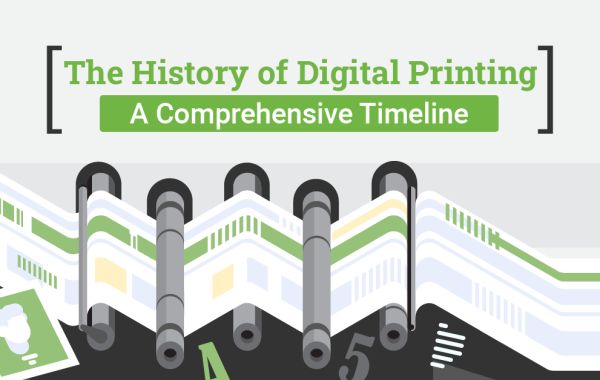The history of digital printing comes from a long lineage, dating back to the 1400s. The development of printing technology allowed business operations to progress. Digital printing converts design or text into soft copies and places them onto the desired platform.
With digital printing, imaging technologies, such as electrophotography and inkjet printing, produce outstanding and high-quality results. Unlike traditional printing methods, digital printing does not require a printing plate.
However, this was the practice during the early years of printing. In 1439, Johannes Gutenberg invented a printing press that could mass-produce copies. Towards the 1790s, printing evolved to lithography. By 1843, Richard March Hoe replaced the flatbed press with the rotary press.
Three decades later, a popular technique called offset printing helped printing progress. The practice involved transferring ink from a plate to a rubber blanket and finally to the desired printing surface.
Fast forward to the 20th century, Chester Carlson invented electrophotography, and Benny Landa devised Indigo. These printing developments paved the way for photocopying and enhanced printing. By 1985, businesses began using office laser printers, producing better-quality text and graphic prints.
In 1990, printer manufacturers created small digital printers and used color laser tools. The printing machines’ design was compact, making them a good competitor against traditional printing shops. Finally, around 2010, digital printing was the norm; people started using digital printers in their offices and homes.
Today, there are four types of digital printing, all using assorted ink and printing on diverse platforms.
- Inkjet – The text or design of choice is printed using ink and reproduced onto various kinds of paper.
- Laser – With the help of a laser, printers produce better-quality texts and graphics.
- Solid ink – This printing technique consists of melting a type of wax resin for ink, then the printer shoots that ink onto a drum, generating color registration.
- Dye sublimation – This involves heating ink inside the printer, setting it off to sublimate then changing it into a gas form. The result is high-quality printed material.
All the latest printing developments entail the must-know printing trends. Apart from staying competitive, keeping up with these modern practices provides the business with various benefits that can add value to its brand.
- Planet-friendly printing –Printing industries started switching to eco-friendly habits and paying more attention to sustainable solutions to help address environmental concerns.
- 3D printing – New technologies made 3D printing possible, offering flexibility with packaging designs while reducing waste, making it an ecological practice.
- “Smart” printing – Automated printing operations seamlessly achieve complex services and outputs.
- Ensured security – Printing businesses started adapting standards to maintain privacy and prevent unauthorized use of printed data.
- More customization options – Demand for custom-made products such as folding cartons and corrugated boxes for personal and business use is growing.
- Greater focus on value-adds – Additional packaging features are helping to make products stand out, attract customers, and keep them satisfied.
- Cloud printing – Companies use a cost-effective solution powered by new printing technology.
To know more about the developments and history of digital printing, check out this infographic.









